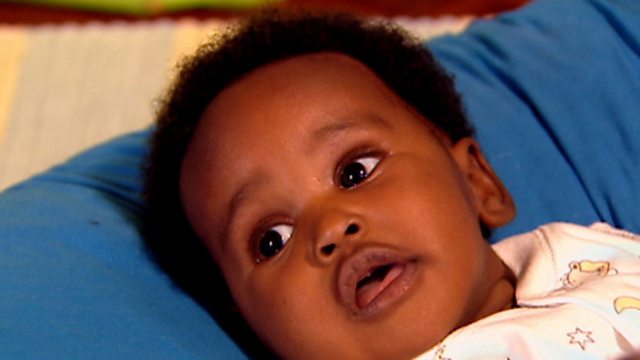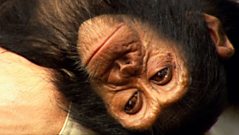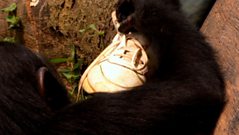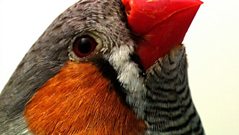
Born brainy
A human's skull fuses in its first year, so it can be born with a big brain.
Large-brained Homo sapiens arrived one and a half million years ago but did not achieve world domination immediately. This was because they had a problem that our four-legged friends did not have. Female wildebeest, for instance, can afford to have wide hips as they walk on all fours. This makes giving birth quick and easy, which is important with so many predators around. Although the baby wildebeest is big, its brain and its skull are quite small in relation to its body size so it can slip out easily. This is true for most land mammals. But for humans, birth is where we pay the price for our big brain. The best design for walking upright is a slender body with narrow hips, but narrow hips are the worst possible design for a big-brained human. However, evolution came up with a surprising solution. Unlike almost all other mammals, our skull is not fully formed at birth. A human baby’s head is soft and squishy, allowing it to pass down the narrow birth canal. During the first 12 months of life, the bony skull plates gradually fuse together to protect it. In effect, we are all born premature. So for the first few months, a human baby is extremely vulnerable, requiring constant care. But the pay-off – a giant brain – far outweighs the risk. It seems this is the only way that we can have a large-brained baby and hang on to the narrow hips we need for walking upright. Biological problem solved.
Duration:
This clip is from
Featured in...
![]()
����ý Nature
Be captivated, informed and inspired by the world's wildlife.
More clips from HUMANS
-
![]()
Blood relatives
Duration: 02:33
-
![]()
Fingers and thumbs
Duration: 03:21
-
![]()
Social problems
Duration: 03:20
-
![]()
Terrorising the troop
Duration: 00:53
More clips from Journey of Life
-
![]()
Predator and prey—LIVING TOGETHER
Duration: 01:01
-
![]()
Flying colours—LIVING TOGETHER
Duration: 03:35
-
![]()
Street fighters—LIVING TOGETHER
Duration: 02:58
-
![]()
Strength in numbers—LIVING TOGETHER
Duration: 02:24










